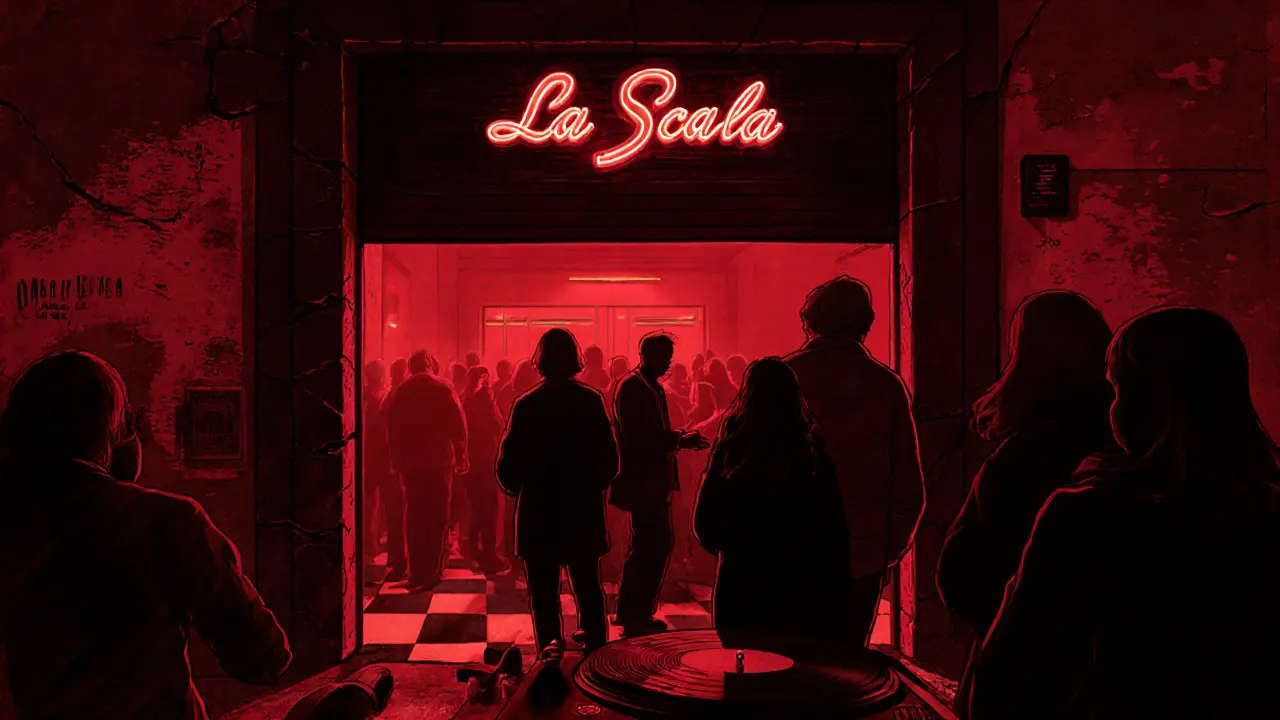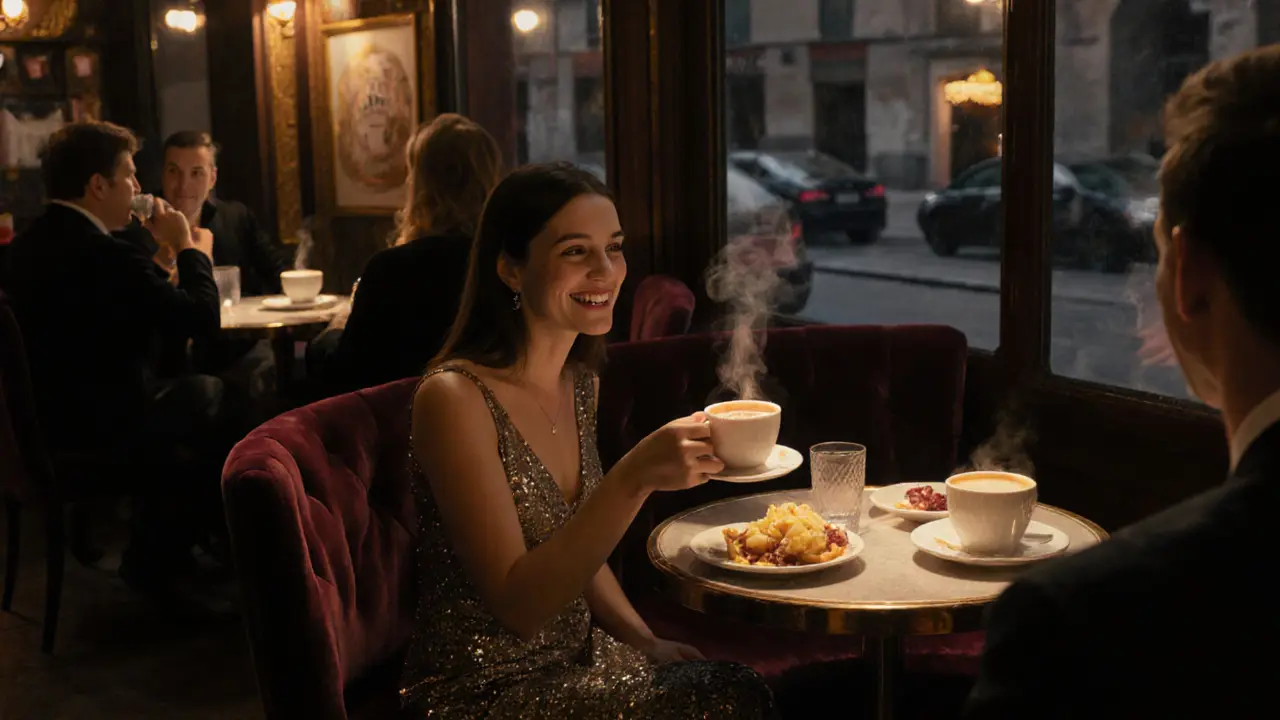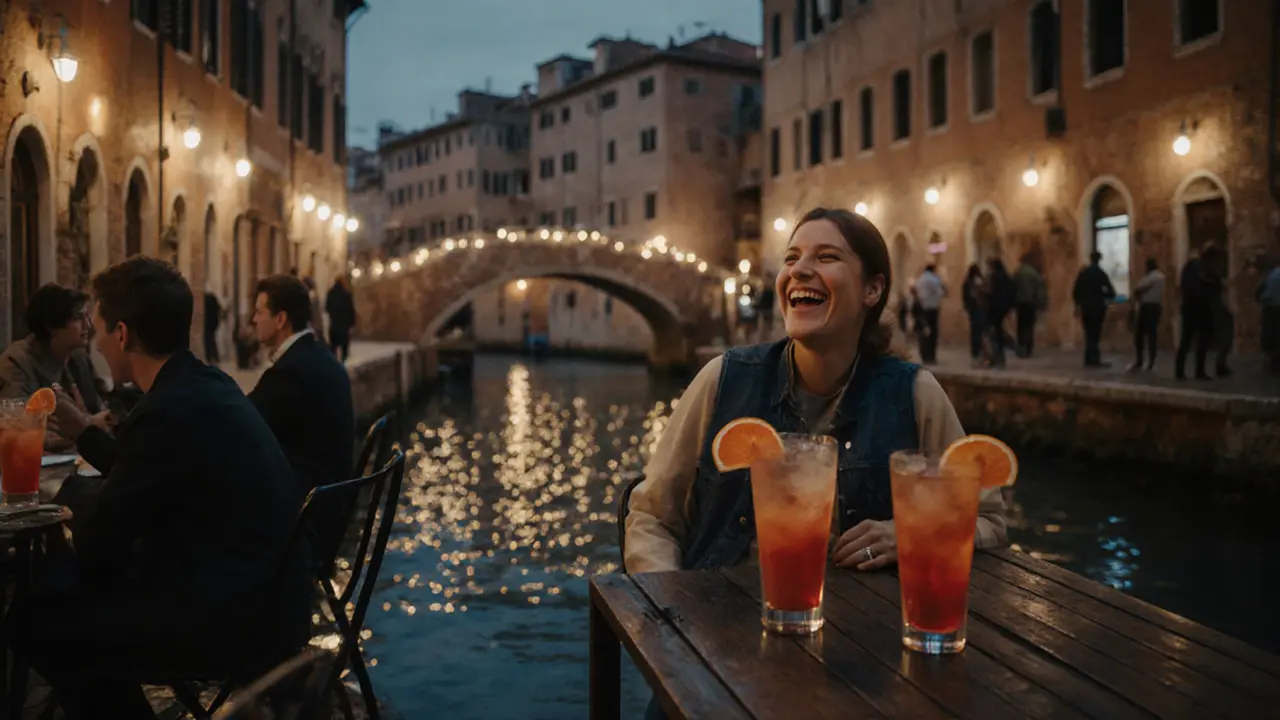17 Nov 2025
- 0 Comments
Milan doesn’t sleep. While most cities quiet down after midnight, Milan’s real night begins at 1 a.m. and doesn’t end until the sun comes up. If you think Italy’s fashion capital is all about designer boutiques and quiet espresso bars, you’re missing the pulse of the city after dark. This isn’t just about drinking-it’s about music, movement, and meeting people who live for the night.
Where the locals go after dinner
Forget tourist traps. The real Milan nightlife starts where the locals do: in the Navigli district. This canal-lined neighborhood turns into a liquid playground every Friday and Saturday. Bars spill onto the sidewalks, live jazz plays from hidden courtyards, and wine spritzes are served in oversized glasses. You’ll find students, artists, and Milanese professionals laughing over Aperol spritzes at Bar Basso, the birthplace of the Negroni Sbagliato. It’s not fancy. It’s real.Don’t expect to find a club here. Navigli is for lingering. For slow sips. For dancing barefoot on wooden floors while someone plays a soulful cover of a 90s Italian hit. If you want to move from drinks to dance, head to the Porta Genova area by 1 a.m. That’s when the real party shifts.
Clubs that actually matter
Milan’s club scene isn’t about glitz. It’s about sound. If you’re after world-class DJs and underground beats, you need to know where to look. Armani/Silos isn’t a club-it’s a cultural space. But on weekends, it transforms. Expect techno sets from Berlin-based artists and crowds that dress like they just stepped off a runway but move like they’ve been dancing since they were 16.Then there’s La Scala-not the opera house. This is a warehouse-turned-club tucked behind a nondescript door near the train station. No sign. No website. Just a bouncer who nods if you know the password (ask your hotel concierge). Inside, the bass shakes the walls. The lighting is red. The crowd? Mostly Italian, some French, a few expats who’ve been here long enough to know the drill. This is where you’ll hear tracks you won’t find on Spotify.
For house and disco lovers, Teatro del Silenzio is the answer. It’s open only on weekends from December to April. The venue is an old theater with velvet seats still in place. DJs spin vinyl only. No digital files. The crowd doesn’t take photos. They just move. Lines form by 11 p.m. If you show up after midnight, you’re already too late.
What to wear-no exceptions
Milan doesn’t care if you’re from Kansas or Kyoto. If you show up in sweatpants and sneakers, you won’t get past the velvet rope. This isn’t about being rich. It’s about respect. The dress code isn’t written down anywhere-it’s understood.Men: dark jeans, clean sneakers or loafers, a fitted shirt or slim sweater. No logos. No hoodies. A blazer isn’t required, but it helps. Women: midi dresses, tailored trousers, or sleek jumpsuits. Heels aren’t mandatory, but you’ll stand out if you’re in flats. The goal? Look like you could walk into a gallery opening at 10 a.m. and no one would blink.
One rule: no sportswear. Not even Nike Airs. Not even if they’re limited edition. You’ll be turned away. No exceptions. This isn’t a rule made by bouncers. It’s a cultural norm. Milanese people dress to express, not to hide.

When to go out-timing is everything
In Milan, dinner isn’t at 7 p.m. It’s at 9:30 p.m. And you don’t leave the table until 11:30. That means clubs don’t fill up until after midnight. If you show up at 10 p.m., you’ll be the only one there. And you’ll feel it.The sweet spot? Between 1 a.m. and 3 a.m. That’s when the energy peaks. The music gets heavier. The crowd thickens. The drinks flow faster. Most clubs don’t even start charging cover until 1 a.m. So arrive early to get in, then stay late to feel it.
Weekends are non-negotiable. Friday and Saturday are packed. Sunday? Quiet. Some bars stay open, but the clubs close. If you’re here on a Sunday, head to Bar Basso for a late breakfast negroni. It’s a Milan ritual.
How to get around-no taxis, no Ubers
Milan’s metro runs until 1:30 a.m. on weekends. After that? You’re on your own. Taxis are scarce. Uber doesn’t work reliably here. The best option? Walk. Most hotspots-Navigli, Porta Genova, Brera-are within 20 minutes of each other.If you’re going farther, use the night bus. Line N1 runs from Piazza Duomo to Navigli every 20 minutes. Line N2 goes from Central Station to Brera. Download the ATM app before you go. It shows real-time bus locations. Don’t rely on Google Maps-it doesn’t update night routes accurately.
And never, ever try to drive. Parking in Milan after dark is a nightmare. You’ll pay €50 for a ticket if you park in a restricted zone. And the fines? They’re mailed to your home country.

What to drink-beyond the spritz
Yes, Aperol spritz is everywhere. And yes, it’s good. But Milan has more to offer. Try a Campari Soda-bitter, bright, and classic. Or a Garibaldi: orange juice and Campari, stirred with a cinnamon stick. It’s what locals drink when they want something stronger than a spritz but don’t want to order a cocktail.For beer lovers, Birrificio Lambrate is the place. Their IPA has won awards in Brussels. Their stout? Smoky, rich, and served at the perfect temperature. You won’t find this in any supermarket.
And if you’re feeling adventurous, try a Montenegro on the rocks. It’s an Italian amaro, darker than whiskey, with notes of herbs and citrus. Italians sip it after dinner. You’ll sip it at 2 a.m. and wonder why you didn’t try it sooner.
What to avoid
Don’t go to the Duomo area at night. It’s pretty, but empty. The only people there are tourists taking selfies with the cathedral. No music. No energy. Just cold air and silence.Don’t trust “VIP tables” sold online. These are scams. You pay €300 for a table that’s in the corner, behind a pillar, with no view of the stage. The drinks? Overpriced. The service? Nonexistent. You’ll pay more for less.
And don’t try to negotiate prices. In Milan, the price on the menu is final. No discounts. No happy hours. Not even on a Tuesday. This isn’t Las Vegas. It’s Italy.
Where to end the night
When the clubs close at 5 a.m., the real Milaners head to Bar Campari on Via Tortona. It opens at 4 a.m. The lights are dim. The music is low. The coffee is strong. The pastries are fresh. You’ll see people in evening gowns and blazers, eating cornetti while talking about the set they just heard.It’s not a club. It’s not a bar. It’s a ritual. A way to say: the night was good. And we’re not done yet.
Is Milan nightlife safe for tourists?
Yes, but stay alert. Milan is generally safe at night, especially in popular nightlife zones like Navigli and Porta Genova. Stick to well-lit streets, avoid isolated alleys after 2 a.m., and never leave your drink unattended. Pickpockets are rare, but they exist-especially near metro stations. Keep your phone and wallet secure.
Do I need to book tables in advance?
Only for high-end venues like Armani/Silos or Teatro del Silenzio. For most clubs, you can walk in. But arrive before 1 a.m. to avoid long lines. If you’re planning to go on a Saturday, texting ahead to ask about capacity can save you hours of waiting. Don’t pay for VIP tables-most are overpriced gimmicks.
What’s the average cost of a night out in Milan?
You can spend as little as €25 or as much as €150. A spritz at Navigli costs €8-€12. A cocktail at a club? €15-€20. Cover charges range from €10-€25, depending on the venue and night. If you’re drinking and dancing at 3-4 places, budget €60-€80. Skip the VIP tables and you’ll save big.
Are there English-speaking staff in clubs?
In tourist-heavy spots like Navigli, yes. In underground clubs like La Scala or Teatro del Silenzio, staff rarely speak English. But you don’t need to. The music, the vibe, the energy-they’re universal. Learn a few Italian phrases: “Un bicchiere di vino, per favore” (a glass of wine, please) goes a long way.
Can I go out alone in Milan at night?
Absolutely. Milan is one of the most solo-traveler-friendly cities in Europe for nightlife. Women go out alone all the time. Men do too. The key is confidence. Dress well, stay aware, and don’t look lost. If you sit at a bar alone, someone will likely strike up a conversation. Milanese people are curious, not creepy.
If you’re visiting Milan for the first time, treat the night like you would the day: with curiosity, not caution. The city doesn’t just open up after dark-it reveals its soul. And if you’re lucky, you’ll leave with more than just a story. You’ll leave with a rhythm you didn’t know you were missing.
